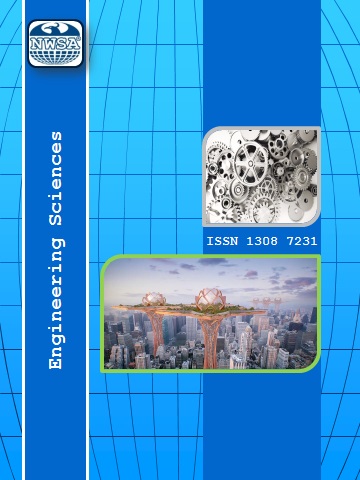References
[1] Hochuli, A.G., De Oliveira, L.E.S., de Souza, B.A., and Koerich, A.L., (2007). Detection and classification of human movements in video scenes. IEEE Pacific Rim Symposium on Image Video and Technology. Santiago, Chile, pp:678691.
[2] Cust, E.E., Sweeting, A.J., Ball, K., and Robertson, S., (2019). Machine and deep learning for sport-specific movement recognition: a systematic review of model development and performance. Journal of Sports Sciences, 37(5):568600.
[3] Zhang, L., Liu, G., Han B., Wang, Z., and Zhang, T., (2019). SEMG Based Human Motion Intention Recognition. Journal of Robotics, 2019:12.
[4] FBian, F., Li, R., and Liang, P., (2017). SVM based simultaneous hand movements classification using sEMG signals. 14th IEEE International Conference on Mechatronics and Automation, ICMA 2017, pp:427432.
[5] Gandolla, M., Ferrante, S., Ferrigno, G., et al., (2017). Artificial neural network EMG classifier for functional hand grasp movements prediction. Journal of International Medical Research, 45(6):18311847.
[6] Politi, O., Mporas, I., and Megalooikonomou, V., (2014). Comparative Evaluation of Feature Extraction Methods for Human Motion Detection. Artificial Intelligence Applications and Innovations, Vol:437.
[7] Aristidou, A. and Chrysanthou, Y., (2014). Feature extraction for human motion indexing of acted dance performances. 2014 International Conference on Computer Graphics Theory and Applications (GRAPP), Lisbon, Portugal, pp:1-11.
[8] Coffey, N., Harrison, A.j., Donoghue, O.A., and Hayes, K., (2011). Common functional principal components analysis: A new approach to analyzing human movement data. Human Movement Science, 30(6):1144-1166.
[9] Allen, D.P. and MacKinnon, C.D., (2010). Timefrequency analysis of movement-related spectral power in EEG during repetitive movements: A comparison of methods. Journal of Neuroscience Methods, 186(1):107-115.
[10] Hou, M., Wang, H., Xiao, Z., and Zhang, G., (2018). An SVM fall recognition algorithm based on a gravity acceleration sensor. Systems Science & Control Engineering, 6(3):208-214.
[11] Sridhar Raj, S. and Nandhini, M., (2018). Ensemble human movement sequence prediction model with Apriori based Probability Tree Classifier (APTC) and Bagged J48 on Machine learning. Journal of King Saud University-Computer and Information Sciences.
[12] Bulling, A., Blanke, U., and Schiele, B., (2014). A Tutorial on Human Activity Recognition Using Body-worn Inertial Sensors, ACM Comput. Surv., 46:133.
[13] Mannini, A. and Sabatini, A.M.. (2012). Gait phase detection and discrimination between walking-jogging activities using hidden Markov models applied to foot motion data from a gyroscope, Gait Posture, 36:657661.
[14] Mannini, A. and Sabatini, A.M., (2010). Machine learning methods for classifying human physical activity from on-body accelerometers. Sensors, 10(2):11541175.
[15] Baccouche, M., Mamalet, F., Wolf, Garcia, C., and Baskurt, A., (2011). Sequential Deep Learning for Human Action Recognition. Human Behavior Understanding, HBU-2011. Lecture Notes in Computer Science, vol 7065.
[16] Seok, W., Kim, Y., and Park, C., (2018). Pattern recognition of human arm movement using deep reinforcement learning. 2018 International Conference on Information Networking (ICOIN), Chiang Mai, pp:917-919.
[17] Bütepage, J., Black, M.J., Kragic, D., and Kjellström, H., (2017). Deep representation learning for human motion prediction and classification. CoRR abs/1702.07486.
[18] Lim, S., Choi, H., and Jang, D.P., (2019). A study of the arm movement feature visualization from non-human primate epidural electrocorticography using deep learning structure. doi: 10.1016/j.ibror.2019.07.519.
[19] Jaouedi, N., Boujnah, N., and Bouhlel, M.S., (2019). A new hybrid deep learning model for human action recognition. Journal of King Saud University-Computer and Information Sciences.
[20] Carvelli, L., Olesen, A.N., Brink-Kjær, A., Leary, E.B., Peppard, P.E., Mignot, E., Sørensen, H.B.D., and Jennum, P., (2019). Design of a deep learning model for automatic scoring of periodic and non-periodic leg movements during sleep validated against multiple human experts. Sleep Medicine, 69:109-119.
[21] Gu, Y., Ye, X., Sheng, W., Ou, Y., and Li, Y., (2020). Multiple stream deep learning model for human action recognition. Image and Vision Computing, 93:103818.
[22] https://archive.ics.uci.edu/ml/datasets/Smartphone+Dataset+for+ Human+Activity+Recognition+(HAR)+in+Ambient+Assisted+Living+(AAL
[23] Krizhevsky, A., Sutskever, I., and Hinton, G., (2012). ImageNet classification with deep convolutional neural networks. In NIPS.
[24] Tuncer, S.A. and Alkan, A., (2018). A decision support system for detection of the renal cell cancer in the kidney. Measurement, 123:298-303.
 +90(533) 652 66 86
+90(533) 652 66 86 nwsa.akademi@hotmail.com
nwsa.akademi@hotmail.com Fırat Akademi Samsun-Türkiye
Fırat Akademi Samsun-Türkiye
